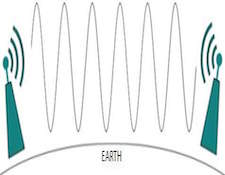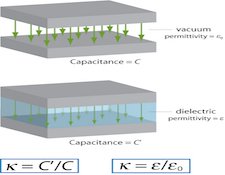It’s the time of year for saving money!
In the first two parts of this series on why we still use cables, I declared that the only real function of any audio cable is to carry signal from one place to another. I also said that that “transport” function is easy and can be performed in many ways, by many different kinds of devices and systems. Then I went on to say that just to transport the signal is not enough: In order to really do its job properly, the signal carrier must not only carry all of the signal all of the way to its destination, it must do so without adding anything, subtracting anything, or changing the signal in any other way. That, I said, is the hard part!
 In examining some of the ways we’ve tried to deal with the problem of high quality signal transmission I wrote that for just about the whole of audiophile history, hi-fi systems have used cables – metal conductors with some form of insulation around them, paired and arrayed in such manner as to complete an electrical circuit – to get signal from one part of a system to another. Conventional cables, though, I wrote, are not the only choice, and I went on to mention several other approaches that had been used to achieve the same end: One was optical signal transmission, which has been, primarily in the communications field, immensely successful. Another was the “Bedini Box”, a bolt-on device available at one time for use with both interconnects and speaker cables that its designer, John Bedini, claimed routed the signal energy through “hyperspace” and used the physical cables NOT as conductors at all, but only as “roadmaps” to indicate to the signal at which point it should re-enter “normal” space to deliver its content for use. Other alternatives I mentioned included cables made with exotic metals or combinations of metals as their conductors and cables with conductors made of actual liquid metals (yes, really liquid, like mercury or chicken soup, only made out of – other than the ones that actually were mercury — a combination of liquid gallium, liquid indium [Would it be more politically correct to call it “Native Americium”?] and a liquid form of tin). I also mentioned transitional “hybrid” cables, mixing non-metallic-but-still-liquid center conductors (liquid polymer) and conventional metallic grounds and shielding, and even some cables, like the carbon-fiber ones from van den Hul and the doped plastic superconductors, said to be coming soon from America’s highest-tech laboratories, that use conductors that, although still “physical” (no hyperspace here!) are not metallic at all.
In examining some of the ways we’ve tried to deal with the problem of high quality signal transmission I wrote that for just about the whole of audiophile history, hi-fi systems have used cables – metal conductors with some form of insulation around them, paired and arrayed in such manner as to complete an electrical circuit – to get signal from one part of a system to another. Conventional cables, though, I wrote, are not the only choice, and I went on to mention several other approaches that had been used to achieve the same end: One was optical signal transmission, which has been, primarily in the communications field, immensely successful. Another was the “Bedini Box”, a bolt-on device available at one time for use with both interconnects and speaker cables that its designer, John Bedini, claimed routed the signal energy through “hyperspace” and used the physical cables NOT as conductors at all, but only as “roadmaps” to indicate to the signal at which point it should re-enter “normal” space to deliver its content for use. Other alternatives I mentioned included cables made with exotic metals or combinations of metals as their conductors and cables with conductors made of actual liquid metals (yes, really liquid, like mercury or chicken soup, only made out of – other than the ones that actually were mercury — a combination of liquid gallium, liquid indium [Would it be more politically correct to call it “Native Americium”?] and a liquid form of tin). I also mentioned transitional “hybrid” cables, mixing non-metallic-but-still-liquid center conductors (liquid polymer) and conventional metallic grounds and shielding, and even some cables, like the carbon-fiber ones from van den Hul and the doped plastic superconductors, said to be coming soon from America’s highest-tech laboratories, that use conductors that, although still “physical” (no hyperspace here!) are not metallic at all.
Not-metallic and semi-not-metallic cables, are touted as offering certain advantages over conventional metallic cables, but so what? Cables made out of exotic metals also claim advantages over their more conventional competitors, and even absolutely ordinary (within their context) cables also claim advantages over others of their kind. Are any of those advantages real? Well, maybe. There are those who say “yes” and others who say “no”.
Of the latter, the most vociferous are those oh-so-conventional souls who insist that it’s all resistance, capacitance, and inductance (“RCL”), and that nothing else about a cable or a cable design can be of any consequence at all. For them, the obvious thing to do to achieve (pardon me, please, for using the phrase first made famous in describing the original CDs) “perfect sound forever” would be to get rid of all of each of those three factors entirely, and the way to do that would be to eliminate physical cables and go to some completely non-physical means of signal transmission.
That, of course, already exists, and is already enjoying some degree of consumer acceptance.
 What I am referring to is, of course, wireless signal transmission, where an audio signal is converted to radio – either digital or analog, AM or FM, or even microwave or something else equally exotic – and then broadcast to a receiver that re-converts it to its original form for further processing and ultimate use. One of the most common applications of this is wireless speaker operation, where an amplifier or even a preamp has its output converted to a radio signal which is broadcast to a receiver/transducer/amplifier just before or built into each of the system’s two speakers.
What I am referring to is, of course, wireless signal transmission, where an audio signal is converted to radio – either digital or analog, AM or FM, or even microwave or something else equally exotic – and then broadcast to a receiver that re-converts it to its original form for further processing and ultimate use. One of the most common applications of this is wireless speaker operation, where an amplifier or even a preamp has its output converted to a radio signal which is broadcast to a receiver/transducer/amplifier just before or built into each of the system’s two speakers.
Does it work? Absolutely. Does it completely eliminate any consideration of RCL? Certainly, BUT ONLY FOR THE DISTANCE BETWEEN THE TRANSMITTER AND THE RECEIVER. Anything either before or after the conversion/re-conversion of the signal will still be subject to the same RCL factors as in any physical system. Does it offer any other advantage over using cables? Certainly, at least from a convenience or decorating standpoint: There are no speaker cables to have to worry about routing, looking-at, or tripping over. As to whether there are also any actual performance advantages, that all depends: If wireless transmission is used to replace a too-long, inappropriate, or poor-quality cable, there may very well be. On the other hand, there are all kinds of potential problem areas, too.
Just the fact of converting and re-converting the signal from one form to another and back creates – as I said about optical signal transmission in Part one of this series – the opportunity for dropouts, distortion, loss of information, or changes, losses, or unwanted additions to the signal at each step along the way, with one part of that problem being the conversion process, itself, and another part being the quality, characteristics, or limitations of the transducers doing the conversion.
Another potential problem lies in the fact that as an electromagnetic signal traveling the airwaves, the music or other information being transmitted is still – and possibly even more so than if it were safely ensconced in a well-shielded cable – subject to RFI and EMI interference, which can have fully as much effect on the broadcast signal and potential sound (or picture, if video) quality as anything that could affect it if it were traveling by cable.
]]>One more fact is that, at least thus far, most wireless systems don’t have amplifiers of either the quality or total available wattage of most cabled systems and most wireless speakers, while they are nowhere even nearly as expensive as good conventional speakers, they are also nowhere even nearly as good-sounding.
 Another factor that must be takeninto consideration in any cables versus wireless decision is the fact that “wireless” gear of any kind may not really be wireless. A power source of some kind must always be available and high-performance speakers or electronics may use so much power that batteries become either impractical or prohibitively expensive, and – even if no other cable is needed – there may still be need of an AC power cord to make things work, in which case that convenience or decorating advantage mentioned earlier may be lost: What difference does it really make if the unsightly or inconvenient wire running to the speaker is a speaker cable or a power cord? There’s still a cable, and it can still be seen or tripped over.
Another factor that must be takeninto consideration in any cables versus wireless decision is the fact that “wireless” gear of any kind may not really be wireless. A power source of some kind must always be available and high-performance speakers or electronics may use so much power that batteries become either impractical or prohibitively expensive, and – even if no other cable is needed – there may still be need of an AC power cord to make things work, in which case that convenience or decorating advantage mentioned earlier may be lost: What difference does it really make if the unsightly or inconvenient wire running to the speaker is a speaker cable or a power cord? There’s still a cable, and it can still be seen or tripped over.
Finally, even if wireless had no problems or potential problems at all, there would still be the fact of the audiophile “stack” of equipment. It simply makes no sense to convert, broadcast, and reconvert a signal going from one component to another that it’s sitting either on or right next to.
Certainly for some uses, or to cater to the tastes and preferences of some people, alternative solutions work and may be desirable, but, for whatever reason, the great majority of people don’t buy them. For most people and most purposes, cables remain the best and most practical way to get signal from one point to another, and for now and the foreseeable future, I think they’re here to stay.





